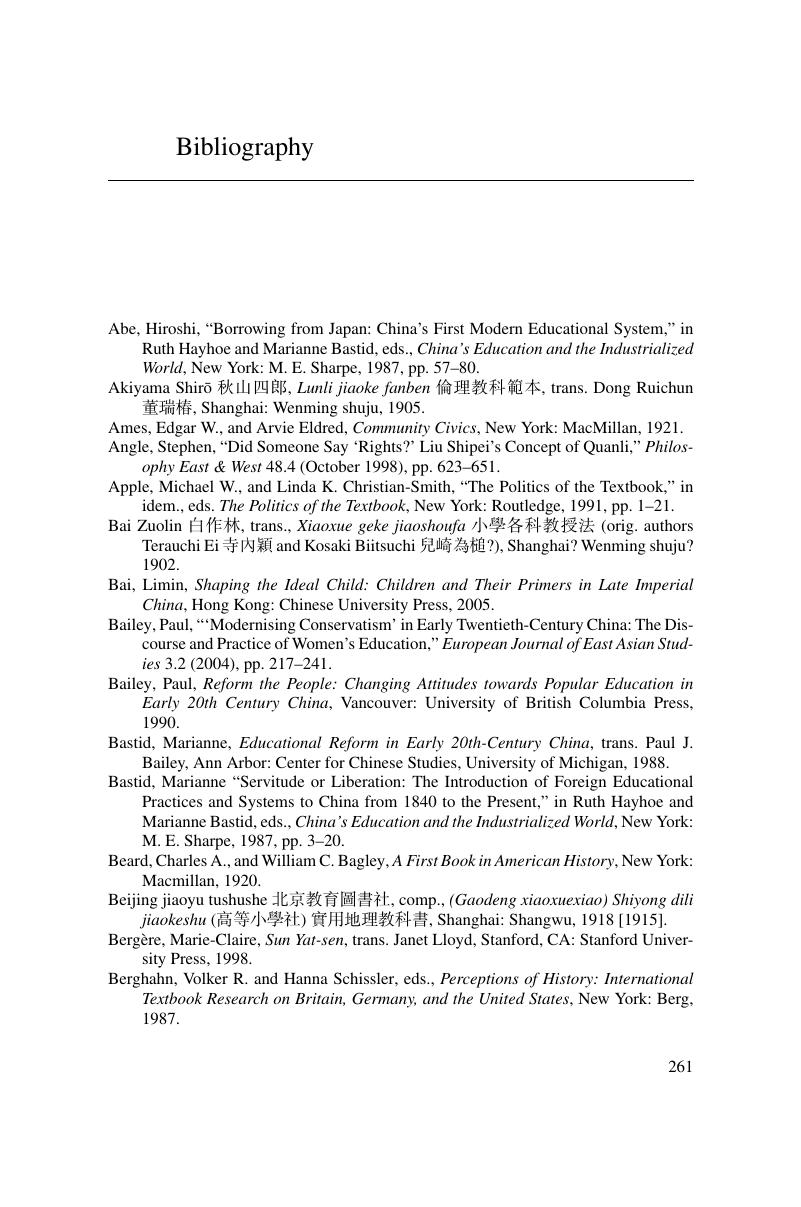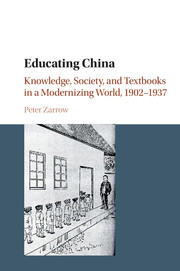Book contents
- Educating China
- Educating China
- Copyright page
- Contents
- Figures
- Book part
- Introduction
- 1 The construction of the state school system
- 2 Reading modern China
- 3 Textbook morality, self-cultivation, and civics
- 4 Good citizens
- 5 The national subject in time
- 6 A usable past
- 7 The importance of space
- Conclusion
- Glossary
- Bibliography
- Index
- References
Bibliography
Published online by Cambridge University Press: 05 October 2015
- Educating China
- Educating China
- Copyright page
- Contents
- Figures
- Book part
- Introduction
- 1 The construction of the state school system
- 2 Reading modern China
- 3 Textbook morality, self-cultivation, and civics
- 4 Good citizens
- 5 The national subject in time
- 6 A usable past
- 7 The importance of space
- Conclusion
- Glossary
- Bibliography
- Index
- References
Summary

- Type
- Chapter
- Information
- Educating ChinaKnowledge, Society and Textbooks in a Modernizing World, 1902–1937, pp. 261 - 278Publisher: Cambridge University PressPrint publication year: 2015



